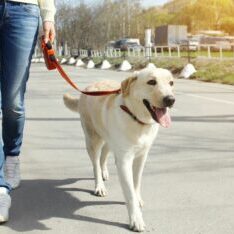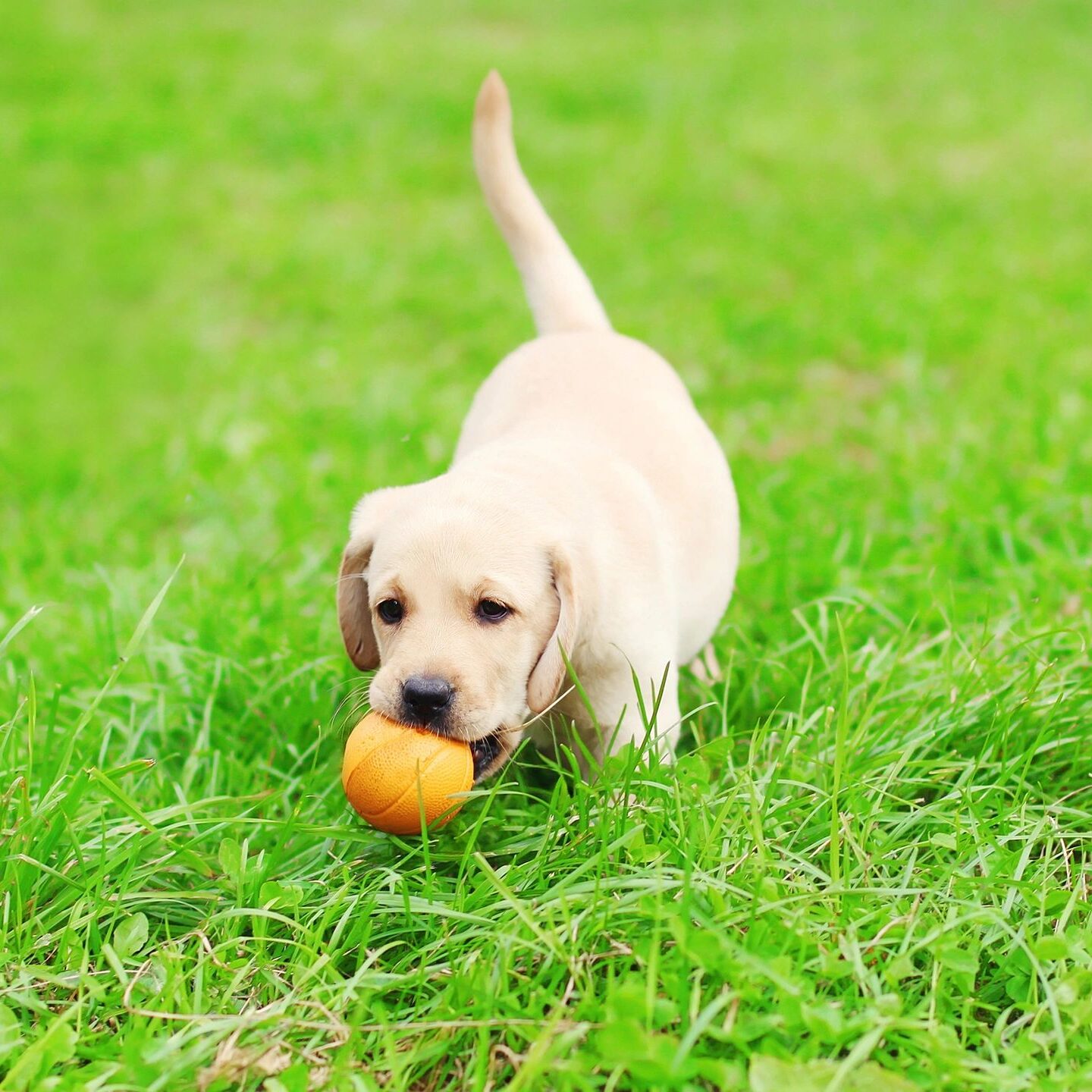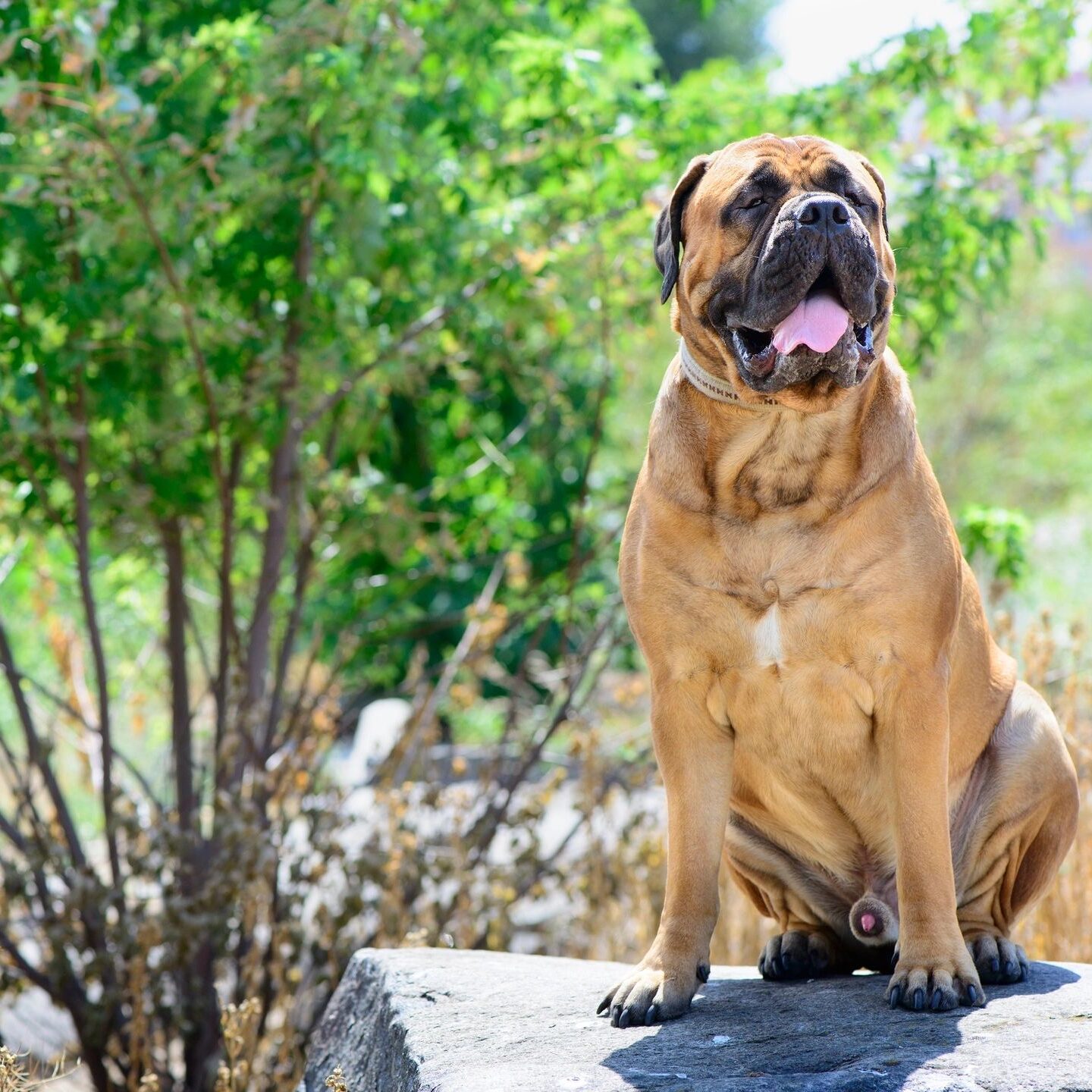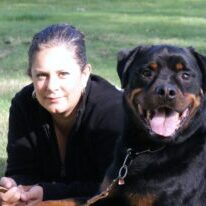AUSTIN DOG OWNERS ARE VOTED #1
Frustrated with your dog's behavior? You're not alone.
Austin dog owners have either tried dog training that didn't work or haven't started yet. They're tired of being embarrassed by their dog's pulling, lunging, barking, and jumping. They worry about their dog getting hurt or running away if the leash breaks. And they feel like they can't have guests over because their dog will jump on them and knock them down.
But it doesn't have to be this way.
With our In-Home Lessons and Mini Boot Camp programs, owners find immediate results and unlimited support. They finally have a well-behaved dog that they can take with them everywhere. They can relax when guests come over, knowing that their dog won't cause any trouble. And they can enjoy walks in their neighborhood without feeling like "that" owner.
Here's what you can expect during our program:
You'll learn how to communicate with your dog in a way they understand. No more yelling or getting frustrated. You'll finally be able to get your dog to listen and obe
We'll help you address any specific behavior problems your dog is having. Whether it's pulling, lunging, barking, jumping, or something else, we have the experience and expertise to help.
You'll get unlimited support from our team of expert dog trainers. We're here for you every step of the way, even after you finish the program.
Ready to stop feeling embarrassed and frustrated and start enjoying your dog again?
Sign up for a free consultation today!
P.S. We're so confident in our programs that we offer a 100% satisfaction guarantee. If you're not happy with the results, you'll get your money back if your dog is untrainable.
So what are you waiting for? Sign up today!
I hope this is helpful! Let me know if you have any other questions.
Watch how our results let this hard working owner walk her dogs after trying so long to get them to walk next to her. These amazing dogs did the Boot Camp and are now able to walk nicely and NOT pull her down ever again!
CONFLICT FREE
That's a great about our og training program! Positive reinforcement and engaging activities are crucial for effective dog training. It makes the learning process enjoyable for both you and your furry friend, turning it into a bonding experience.
And we help you having the right training gear can make all the difference. It can help you communicate more effectively, prevent distractions, and ensure a safe and comfortable environment for your dog to learn.
By providing the necessary skills and equipment, you're taking proactive steps to prevent accidents and set both yourself and your dog up for success. It's like giving them the tools they need to build confidence and good behavior.
Would you like me to help you brainstorm some engaging training activities or suggest some specific training gear that might be useful?
BOARD AND TRAIN
Let us do the hardwork! That's one of the things that truly sets our program apart. We believe in training for real life, not staged scenarios. It's not about your dog behaving perfectly in a sterile environment, but about them thriving amidst the chaos of everyday life.
We want you to be able to:
Have guests over without worrying about your dog jumping, barking, or being a nuisance. Imagine the joy of hosting a stress-free dinner party with your well-behaved pup by your side!
Let your kids play in the backyard without fear of the dog nipping or knocking them over. Picture your children giggling as they chase the dog around the yard, both of them safe and happy.
Enjoy a leisurely bike ride with your furry companion trotting calmly alongside you. Breathe in the fresh air and feel the sun on your face as you share an unforgettable moment with your best friend.
Sit on a restaurant patio and savor a delicious meal while your dog politely waits under the table. No more embarrassing barking or begging for scraps - just peaceful relaxation and good company.
With our program, you'll receive both in-home and out-of-home training, so your dog learns to behave well in any situation. We'll work with you in your living room, your backyard, your local park, and even bustling downtown streets.
No more wondering if your dog will "remember" their training when they're outside their comfort zone. We equip them with the tools and confidence to navigate the real world with grace and obedience.
So, are you ready to say goodbye to staged scenarios and hello to a life filled with real-world dog training success?
Sign up for a free consultation today and let's get started!
ONE ON ONE
Training can be intimidating and overwhelming. One-on-one dog training can indeed be incredibly beneficial, especially for those who feel intimidated or unsure about the process. It provides a personalized and tailored approach that ensures both you and your dog are comfortable and supported throughout the learning journey.
Just as learning a new language can be more effective with one-on-one instruction, dog training also benefits from personalized attention. The trainer can focus on your dog's unique personality, learning style, and any specific behavioral challenges they may face. This individualized approach allows for a more effective understanding of your dog's needs and how to communicate with them effectively.
In a group setting, there may be distractions, noise, and varying levels of dog behavior, which could make it challenging for both the trainer and the dog to focus on specific training goals. One-on-one lessons provide a quieter, more controlled environment that allows for greater focus and communication.
Moreover, one-on-one training sessions allow for a more in-depth assessment of your dog's behavior and the underlying factors contributing to any issues they may have. The trainer can gain a deeper understanding of your dog's communication cues, triggers, and responses, which is crucial for developing a tailored training plan that addresses their individual needs.
Overall, one-on-one dog training can be a game-changer for both you and your furry companion. It provides a personalized, focused, and effective approach to learning and behavior modification, setting you both up for success and a happy and harmonious relationship.
Behavior Modification
- Jumping
- Barking
- Lunging
- House Soiling
- Anxiety
- Obedience
- Socialization
- Public Distractions
Foundation Training
- Sit/ Focus
- Down & Stay
- Heel/ With Me
- Come when Called
- Leave It
- Door/ property perimeter
- Proper Leash Manners
- Car Manners
Off Leash Training
- Not fancy foot work
- Reliability & safety
- Controlled Freedom
- Confidence (nervous, shy)
- Establish better manners
- Create a calm demeanor
- Behavior modification
- Reliable Off Leash control
Teaching Your Dog to Heel: Walk with Confidence
Walking your dog shouldn't be a battle. Imagine strolling calmly by your side, arm relaxed, enjoying the scenery. But instead, your dog pulls like a sled dog, your arm aches, and you fear the leash will snap.
Sound familiar?
- Does your dog lunge ahead, dragging you down the street?
- Are your walks a constant tug-of-war, leaving you exhausted?
- Worried about the leash breaking or your dog darting into traffic?
Teaching your dog to "heel" is more than just fancy footwork. It's about building a calm, confident companion by your side, ready to explore the world together. 🐶
Imagine:
- Strolling through the park, side-by-side, enjoying the peaceful sights.
- Navigating busy streets with ease, knowing your dog is safe and focused.
- Feeling the joy of a relaxed walk, free from strain and worry.
This is possible! We can teach you and your dog the tools and skills to walk anywhere, with any distractions, and create a bond built on trust and understanding.
Ready to ditch the leash-pulling nightmare and walk confidently with your best friend? Contact us today for a free consultation!
SHOULD YOU CRATE TRAIN YOUR DOG?
Crating doesn't have to be a prison for your dog.
- Start by introducing the crate to your dog in a positive way. Let them explore it on their own and give them treats inside.
- Once your dog is comfortable with the crate, start closing the door for short periods of time. Gradually increase the amount of time your dog is crated.
- Make sure your dog has plenty of toys and bedding in their crate to keep them comfortable.
- Never use the crate as punishment. Your dog should see it as a safe and happy place.
- Be patient! It may take some time for your dog to get used to being crated.
Here are some of the benefits of crate training:
- It can help with potty training.
- It can provide a safe place for your dog to relax.
- It can help prevent your dog from getting into trouble when you're not home.
- It can make it easier to travel with your dog.
If you're thinking about crate training your dog, I encourage you to do your research and find a method that works best for you and your dog.
I hope this helps!
DOES YOU DOG BARK CONSTANTLY?
Stopping Your Dog's Barking Before It Becomes an Obsession
Dogs bark. It's their natural way to communicate. But when barking becomes excessive and uncontrollable, it can be a major pain point for both you and your furry friend.
Here's the harsh truth: yelling or baby talk only makes things worse. It fuels their anxiety and reinforces the barking behavior. It's like opening Pandora's box – easy to get into, but a nightmare to close.
The good news? It's completely trainable. But be prepared for a bumpy road.
Here's how to nip barking in the bud before it turns into an obsession:
1. Decode the Bark:
First, figure out what's triggering the barking. Is it the mailman, the neighbor's cat, or just a squirrel in the backyard? Understanding the "why" behind the bark is crucial for crafting a solution.
2. Build a Fortress of Calm:
Limit your dog's visual access to triggers. Think blackout curtains, fences, or even strategically placed furniture. Remember, dogs see the world differently than us – their territory extends far beyond your backyard fence.
3. Confidence is Key:
Obedience training and positive reinforcement build confidence, reducing anxiety and the need to bark. Think of it like giving your dog a superpower – the ability to navigate the world calmly and confidently.
4. Communication is a Two-Way Street:
Sometimes, corrections are necessary, but they should be fair and consistent. Imagine raising a child without boundaries or rules – that's what happens when you only spoil your dog.
5. Unleash the Power of Recall:
A strong recall is your secret weapon, especially for outdoor barking. If your dog is mesmerized by a squirrel, a reliable "come" can pull them back from the brink of barking oblivion. Remember, a weak recall is like a rusty sword – useless in the heat of the moment.
6. Inside & Outside, United:
Don't compartmentalize training. Teach obedience and good behavior both indoors and outdoors. It's like learning a new language – you wouldn't practice only in the kitchen, would you?
Remember:
- Patience is your best friend.
- Consistency is key.
- Seek professional help if needed.
With dedication and the right approach, you can turn your barking dog into a calm and confident companion. And that's a reward worth barking about!
Here are some images to help visualize the points:
- A dog barking at a mailman through the window
- A dog calmly lying on a bed in a room with blackout curtains
- A dog happily following a "come" command in a park
- A dog sitting obediently next to its owner on a walk
- A dog trainer working with a dog and its owner
I hope this helps!
NEED HELP WITH RECALL? TRY THESE TIPS.
Distance and Distractions can be the pain point of the Come Command
-
Distance plays a significant role in teaching the "come" command, as distractions become more overwhelming the farther the dog gets from the owner. It's crucial to start in controlled environments and gradually increase the distance and level of distractions.
-
Energy Levels: For high-energy dogs, harnessing their enthusiasm is key. Use toys and activities to engage them and make the "come" command a fun game. Teach them to perform a "front sit" or "slide-in-to-heel" position as an extra challenge.
-
Motivation: Even low-energy dogs can learn the "come" command. Emphasize earning rewards through engagement and obedience, rather than just treats. Make them work for what they desire, building their desire to obey.
-
Regular Reinforcement: Regular practice in various settings, including public places, is essential to maintain the command and ensure reliability in real-world scenarios.
-
Car Safety and Emergency Preparedness: Incorporate car safety training, teaching dogs to load up and out of cars, and providing guidance on emergency situations.
-
Investment in Quality Training: While cheaper group lessons may seem appealing, consider investing in individualized training for personalized attention and more effective results.
-
Value of Training: The cost of training pales in comparison to the potential veterinary expenses avoided by having a well-trained dog.
-
Pairing Commands: Incorporate additional commands like "heel" and "down" for enhanced obedience and overall control.
-
Emergency Down Command: Teach the "Emergency Down" for situations where the dog needs to remain calm and still.
-
Expert Guidance: Seek guidance from experienced dog trainers for personalized instruction and tailored training plans.
WANT TO WALK PEACEFULLY ON A HIKE OR BEACH?
Taking your furry friend on a hike can be an amazing bonding experience, offering both of you exercise, fresh air, and stunning scenery. But before you lace up your boots and grab the leash, here are some tips to ensure a safe and enjoyable hike for you and your pup:
Preparation:
- Choose the right trail: Consider your dog's age, fitness level, and experience. Start with shorter, easier trails and gradually increase difficulty as they get used to it. Research the trail for potential hazards like steep inclines, wildlife encounters, or areas with restricted dog access.
- Pack smart: Bring plenty of water for both you and your dog, especially on warm days. Pack collapsible bowls, poop bags, and a first-aid kit in case of minor scrapes or injuries. Consider bringing dog booties if the trail is rough or rocky.
- Gear up: A well-fitting harness and leash are essential for control. Opt for a shorter leash for crowded areas and a longer one for allowing your dog to sniff around safely. For extra safety, consider a reflective leash or collar for low-light conditions.
On the trail:
- Leash etiquette: Keep your dog on leash at all times, even if they have good recall. This protects wildlife, respects other hikers, and prevents your dog from getting lost or injured. Be prepared to yield to uphill hikers and give them ample space.
- Leave No Trace: Pick up after your dog! Pack enough poop bags and dispose of them properly in designated bins or carry them out with you. Leave the trail as you found it.
- Mind the heat: Dogs overheat easily, so avoid hiking during the hottest parts of the day. Choose shaded trails if possible, and be mindful of your dog's energy levels. Take frequent breaks and offer them water regularly. Watch for signs of overheating like excessive panting, drooling, or glazed eyes. If you see any, seek shade immediately and cool your dog down with water.
- Wildlife encounters: Keep your dog close and under control when encountering wildlife. Leash reactivity training beforehand can be helpful. Avoid disturbing animals and give them plenty of space. Carry bear spray if in bear country and know how to use it.
Additional tips:
- Start slow: Let your dog sniff and explore at their own pace. Don't push them beyond their limits, especially on their first few hikes.
- Make it fun: Bring along your dog's favorite toys or treats for breaks and positive reinforcement.
- Be mindful of other hikers: Not everyone is a dog lover. Be respectful and keep your dog away from people who seem uncomfortable.
- Have fun! Hiking with your dog is a great way to bond and create lasting memories. Relax, enjoy the scenery, and let your furry friend lead the way (within reason, of course!).
Remember, preparation and awareness are key to a successful dog-friendly hike. By following these tips, you can ensure a safe and enjoyable adventure for both of you, leaving you with wagging tails and happy memories.
DON'T LEAVE YOU DOG HOME, TAKE THEM WITH YOU!
Taking your furry friend to restaurants can be a delightful experience, adding a dash of canine charm to your dining out. But before you head out with your pup in tow, here are some things to consider for a smooth and enjoyable experience for everyone involved:
Restaurant Choice:
- Look for the paw-sitive signs: Opt for restaurants with outdoor patios or designated dog-friendly areas. Many restaurants explicitly welcome well-behaved dogs, while others might allow them on a case-by-case basis. Call ahead to confirm their policy and any restrictions they might have.
- Consider your canine companion: Choose a restaurant with a relaxed atmosphere where your dog won't feel overwhelmed. Busy establishments with loud music or crowded spaces might not be the best fit.
Prepping Your Pup:
- Basic training is key: Ensure your dog has mastered basic commands like "sit," "stay," and "come." This helps maintain control and ensures your dog doesn't disrupt other diners.
- Potty break beforehand: Avoid accidents by taking your dog for a good potty break before heading to the restaurant. This will minimize distractions and keep them focused on enjoying the outing.
- Pack essentials: Bring a leash (short leash for crowded areas), poop bags, water, and a comfy bed or blanket for your dog to relax on. Consider a portable food and water bowl if the restaurant doesn't provide them.
Restaurant Etiquette:
- Respect the space: Keep your dog under control and close by at all times. Don't let them wander freely or beg for food from other tables.
- Be mindful of others: Some people might be allergic or uncomfortable around dogs. Choose a secluded spot if possible and be prepared to move if someone expresses discomfort.
- Clean up after your pup: Accidents happen, so be ready with poop bags to clean up any messes promptly and dispose of them properly.
- Leave a good paw-pression: Reward your dog for good behavior throughout the meal. This reinforces positive restaurant experiences and makes them more likely to be welcome back.
Bonus Tips:
- Start small: Choose a casual restaurant with a dog-friendly patio for your first outing. This allows your dog to adjust to the new environment gradually.
- Consider timing: Opt for off-peak hours when the restaurant is less crowded, creating a calmer experience for both your dog and the staff.
- Bring entertainment: Pack a chew toy or puzzle to keep your dog occupied while waiting for food or if they get restless.
- Tip generously: Show your appreciation for the restaurant's dog-friendly policy with a bit extra on your bill.
Remember, taking your dog to restaurants requires responsible pet ownership and consideration for others. By being prepared, respectful, and mindful, you can ensure a pleasant experience for everyone involved and pave the way for more dog-friendly dining in the future. So, go forth, have fun, and enjoy a delicious meal with your furry best friend by your side!
NEED HELP AT THE VETERINARIAN?
- Do you need information about what to expect at the vet? I can provide details about common procedures, what questions to ask the vet, and how to prepare your dog for the visit.
- Are you feeling anxious or overwhelmed? I can offer calming techniques and helpful distractions to ease your nerves and support you during your visit.
- Do you need assistance communicating with the veterinarian? I can help clarify medical terms, ask follow-up questions, and ensure you understand the treatment plan.
- Are you facing financial difficulties? I can offer resources for pet insurance, financial aid programs, and low-cost veterinary clinics.
- Do you need help understanding your dog's behavior or symptoms? I can provide information about common dog ailments and offer suggestions for managing your dog's condition.
Please let me know what specific help you need at the vet, and I'll do my best to assist you. Remember, I'm not a substitute for professional medical advice, but I can be a helpful companion and advocate for you and your furry friend.
You've waited long enough.....time to get started!
-
Having a well-trained dog can open up a world of possibilities for both of you. You can enjoy adventures together, knowing your furry friend will be by your side and well-behaved.
It's never too late to train your dog. Dogs are incredibly adaptable and can learn new things at any age. Whether you have a young puppy or an older dog, there's a training program out there that's right for them.
And don't worry about the cost or time commitment. Hiring a professional dog trainer can actually save you money in the long run by preventing behavior problems that could lead to expensive vet bills or property damage. Plus, a good trainer can help you get the most out of your training sessions, so you won't have to waste time and effort on methods that don't work.
So, if you're looking for a way to improve your relationship with your dog and make your life together more enjoyable, hiring a dog trainer is a great investment.
Here are a few things to consider when choosing a dog trainer:
- Experience: How long has the trainer been working with dogs? What kind of experience do they have with your dog's breed or behavior problems?
- Training methods: Does the trainer use positive reinforcement methods? Are they experienced in using the tools you're comfortable with, such as clickers or treats?
- Personality: Do you click with the trainer? Do they seem to understand your dog and your goals?
It's important to find a trainer that you feel comfortable with and who you trust to help you and your dog reach your full potential.
I would also add that it's important to be realistic about your goals and expectations. Training a dog takes time, patience, and consistency. There will be good days and bad days, but with the right trainer and the right attitude, you can achieve amazing results.
So, what are you waiting for? Start your search for a dog trainer today and take your relationship with your furry friend to the next level!
How to Choose a Dog Trainer
Having the benefits of hiring a local dog trainer in Round Rock, Pflugerville, Cedar Park, and Georgetown:
-
Expertise: With over half a lifetime of experience in professional dog training and veterinary technician work, the local trainer has a deep understanding of dog behavior and training methods.
-
Customization: The trainer will conduct an in-depth behavior evaluation and assessment to create a personalized training plan that addresses your dog's specific needs and goals.
-
Differentiated Services: The trainer offers a variety of services, including private lessons, Stay & Train options, and puppy training programs.
-
Direct Communication: As a local trainer, the trainer is readily available for communication and support, ensuring that you and your dog stay on track with your training goals.
-
Community Engagement: The trainer is invested in the local community and is passionate about helping dog owners in the Round Rock, Pflugerville, Cedar Park, and Georgetown area have well-behaved and well-adjusted dogs.
If you are looking for a knowledgeable, experienced, and personalized dog training experience, consider hiring a local trainer in Round Rock, Pflugerville, Cedar Park, and Georgetown.
A little about me, Julie the Dog Trainer
- Former veterinary technician prior to full time dog trainer.
- Certified through 3 major canine organizations.
- 21 years experience in puppyhood, obedience and behavior.
- Completely committed in seeing owners & their dogs thrive.
- Dedicated family owned business owner 15 years.
- K9 decoy, Service dog and therapy dog handler.
- Have trained approx over 4,000 dogs in the 21 years.
Julie is an amazing trainer and all-around good person.
She took my incredibly anxious and dog-aggressive pup for a six week board and train and gave me back a calm, well adjusted dog. She explains her methods clearly and well. She does wonderful follow up and provides continuing advice and training where needed. I would not have been able keep my dog if not for her. I cannot recommend her highly enough.
- Kelly R., client since 2010








